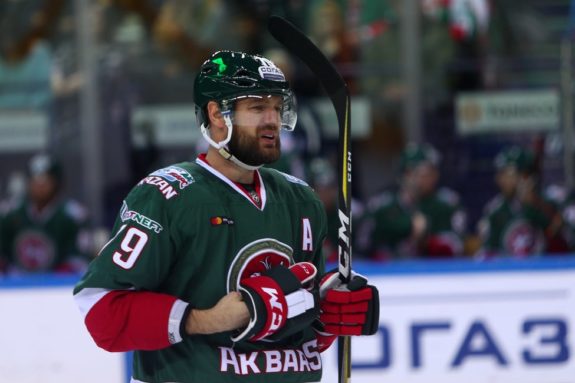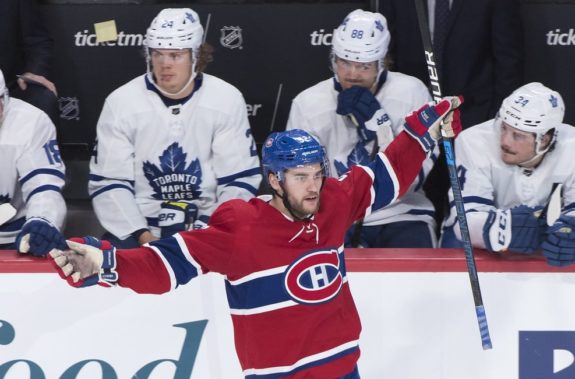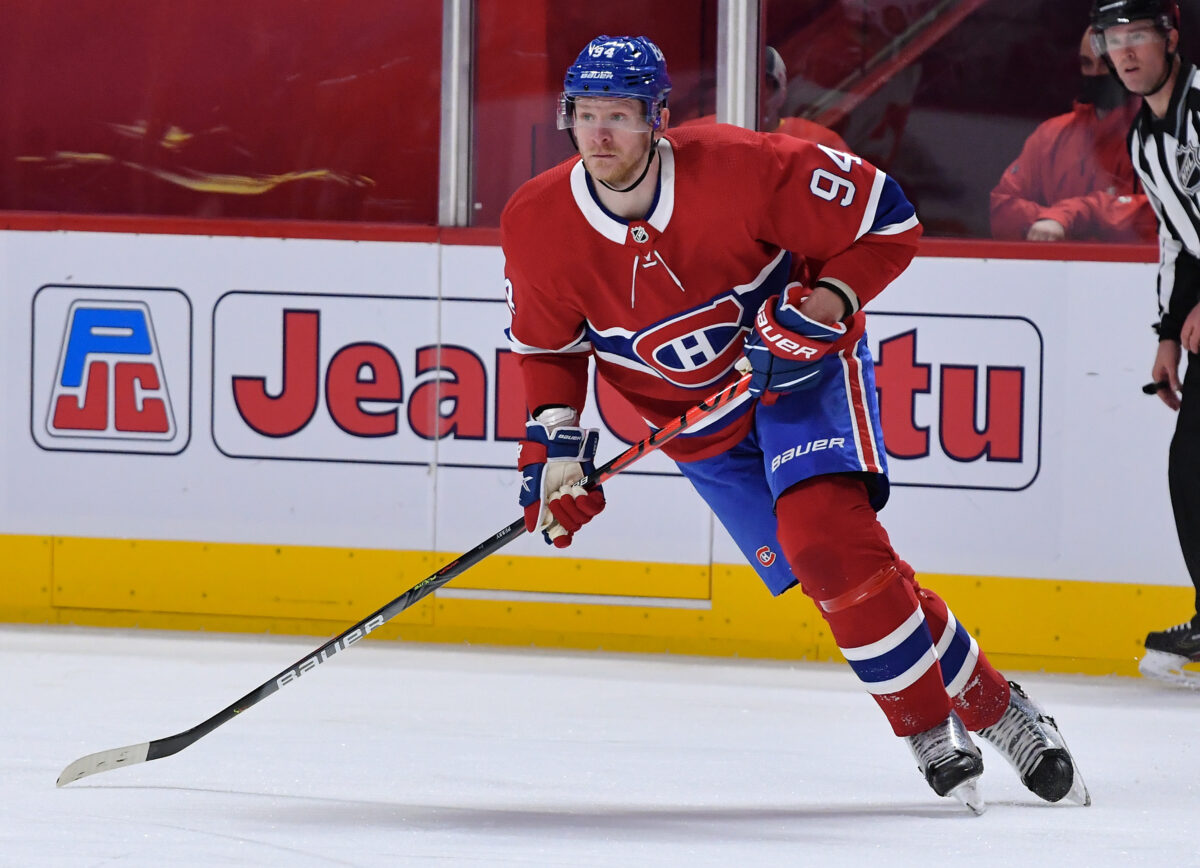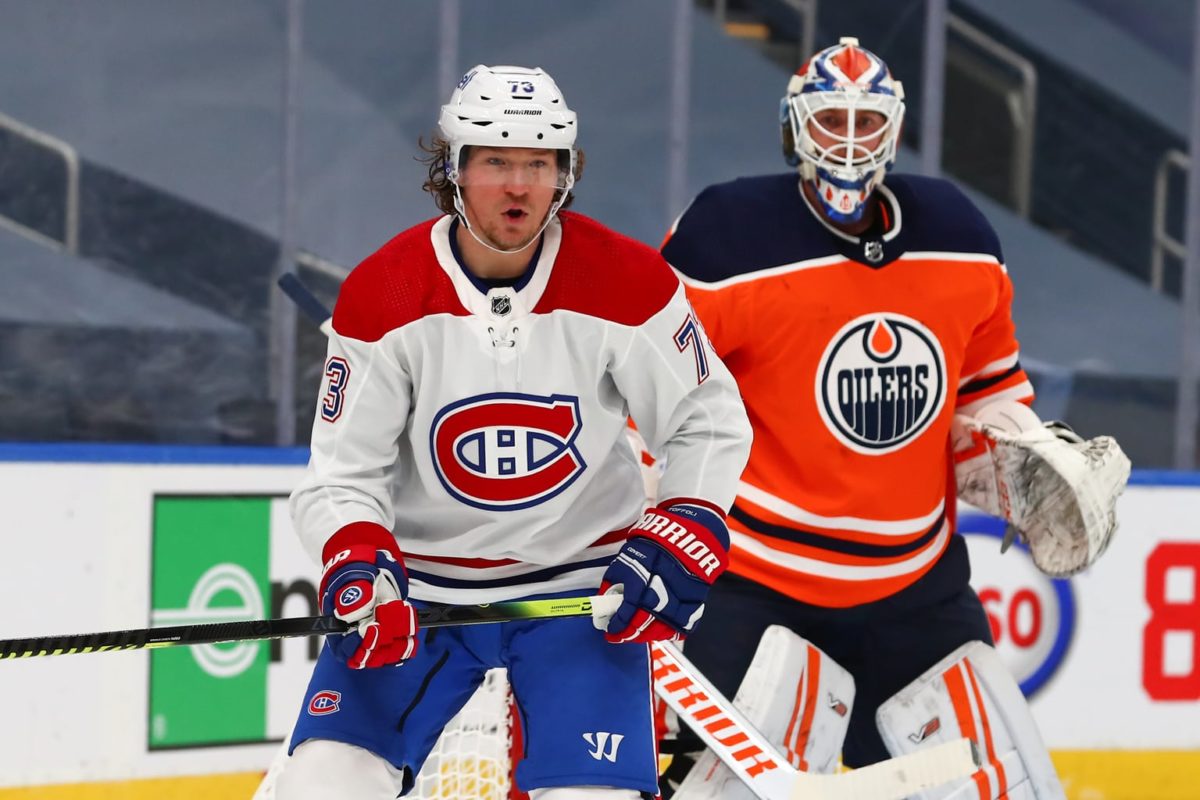As the sting of losing in the Stanley Cup Final subsides, a different feeling will slowly take its place among Montreal Canadiens fans: hope and a renewed sense of pride. The Habs gave fans a magical run that the last generation could share with their children, and the new generation could finally call the Canadiens their team.
It was an improbable run that few predicted.
Was it a fluke? Some will say it was. But the question is, was general manager Marc Bergevin’s retool plan successful and will playoff success follow?
A Look Back at the Retool Plan
After the 2016-17 season, when the Atlantic Division Champion Canadiens finished with 104 points but lost in the first round to the wild-card New York Rangers in six games, the Vegas Golden Knights expansion took Alexei Emelin from the team before Andrei Markov and Alexander Radulov were allowed to walk as free agents. The roster seemed depleted of talent, and the 2017 offseason was widely seen as a failure.

11.10.18. KHL Championship 2018-2019. Ak Bars (Kazan) – Spartak (Moscow). Чемпионат КХЛ сезона 2018/2019. «Ак Барс» (Казань) – «Спартак» (Москва). Андрей Марков. (Image courtesy photo.khl.ru)
In the 2018 offseason, Bergevin declared that he was going to “retool” the Canadiens by building around captain Shea Weber and star goaltender Carey Price through the draft. He was true to his word. Since then, he’s added 29 prospects to what is now seen as one of the league’s strongest prospect pools, which includes Jesperi Kotkaniemi, Alexander Romanov, and Cole Caufield, who all played a key role this season.
However, the Max Pacioretty trade had the most significant impact on the long-term success of the retool. In exchange for Pacioretty, the Canadiens landed two important pieces that filled a glaring need in their system: Nick Suzuki, who has become a first-line center, and Matthias Norlinder, a future NHL puck-moving defenseman. Tomas Tatar was also part of that deal, and while he ranked in the top-four on the team in points in his three seasons with the team, he isn’t likely to be part of their long-term plans.
Shrewd trades and strong drafting and development was the plan. But Bergevin chose not to have a fire sale and move out all of his NHL assets for futures. While some franchises such as the Chicago Blackhawks and Pittsburgh Penguins have won with that model, others like the Buffalo Sabres and Edmonton Oilers have not had much success – the two teams have two playoff appearances combined in the last decade.
This Season Was No Fluke
Even as the Canadiens were competing in the Stanley Cup Final, some were calling their run pure luck or a fluke. Others said the Scotia North Division was weak and easy to compete in.
That isn’t the case. Other divisions had teams with a worse record than the last-place team in the Scotia North Division. It could be argued that the division had more parity which made points harder to earn and more evenly spread out. The Toronto Maple Leafs finished five points behind the Colorado Avalanche for the President’s trophy. If they had played in the Pacific against teams like the Anaheim Ducks and San Jose Sharks, they might have been in the hunt for the regular-season title.
However, the Canadiens finished fourth in their division, and it could be argued that they severely underachieved compared to pre-season expectations. They faced many obstacles that might have derailed their season, including a positive Covid-19 case that postponed the campaign for a week. They then had to reschedule the remaining 25 games of the regular season into a 43-day calendar which meant they were playing four, sometimes five, games a week, every week for the rest of the season.
The tight schedule inevitably led to a flood of injuries. Montreal had to play for long stretches with as many as seven injured players, including Brendan Gallagher, Price, Ben Chiarot, Weber, Jonathan Drouin, Arturri Lehkonen, and the coaching staff had to rely heavily on their depth players. All this and a coaching change too. Despite the laundry list of excuses to quit, they persevered and earned a playoff spot.

As the lowest seed in their division and the last team to clinch a playoff berth they had a daunting path to the Final. They were given no chance to beat the Maple Leafs, the North Division’s regular-season champs. The Canadiens won. They were given no chance against the Winnipeg Jets. The Habs won. They were given no chance against the league-leading Golden Knights because the North was considered a weak division. Again, Montreal won. Then came the Stanley Cup Final, where they lost to a much deeper and more experienced team. They were competitive at times, but the Lightning took advantage of every error and won their Stanley Cup Championship in as many years.
The Canadiens are a flawed team, but these last two seasons, with a return to the playoffs and a condensed season, have gone a long way in giving their young players the experience they need to learn how to win.
Learning to Win
It’s a process. That’s what every championship team says over and over. But what does it mean?
“We learn wisdom from failure much more than from success. We often discover what will do, by finding out what will not do; and probably he who never made a mistake never made a discovery”
– Samuel Smiles
It takes years for prospects to develop into the potential they were drafted to meet. They gain experience by being thrown into the fire and learning from each stage of an NHL season, such as battling for a playoff spot, learning how to manage a seven-game series, then closing one out, and on and on. Teams add veterans – as Bergevin did with Corey Perry – to help share the experience, but the core players need to experience all this as a group in order to take the next step in their development.

The Chicago Blackhawks went through the rebuilding process and needed to lose in the 2009 Western Conference Final to learn from their mistakes and win the Stanley Cup in 2010, their first of three over the next six years.
The Pittsburgh Penguins’ process included missing the playoffs for a few years. Once they made the postseason, they lost in the first round in 2007 and lost in the Stanley Cup Final to the Detroit Red Wings in 2008 before they won the Cup in 2009 and remain a contender to this day.
Finally, a look at the reigning back-to-back Stanley Cup champions Tampa Bay Lightning. They spent several seasons oscillating between making and missing the playoffs under former GM Steve Yzerman. Prior to these last two championships, they had some playoff successes, but including a trip to the 2015 Stanley Cup Final, but were also swept more than once.
But they finally became the juggernaut they are today after winning the 2018-19 President’s Trophy, steamrolling through the regular season, only to be swept by the Columbus Blue Jackets in the first round. They identified what they needed for playoff success and, three years later, they have become what may be one of the best salary cap era teams ever assembled.
Were the Habs All in?
Last offseason, a full three seasons into the new retooling plan, the Canadiens were coming off of an appearance in the first round of the playoffs during the Return to Play model the NHL built during the pandemic. After being eliminated by the Philadelphia Flyers, Bergevin went out and made several additions, signing Joel Edmundson, Tyler Toffoli, Corey Perry and trading for Jake Allen and Josh Anderson. Adding experience and filling team needs for more depth.

Some, like Brendan Kelly – Bergevin’s biggest critic – believe he went all-in because his job was on the line. But In interviews, Bergevin shoots down the idea, stating:
“We haven’t sacrificed our future for short-term or long-term to put this team on the ice. The people in the National Hockey League who like to say the Canadiens have bet everything for this season … It’s like when you play poker and you put in all your chips. We didn’t do any of that. We added elements without taking anything away from our future.”
– Marc Bergevin (from ‘Stu Cowan: Canadiens GM Marc Bergevin has Given Fans Hope Again,’ The Montreal Gazette, 04 Jan 2021)
Bergevin is correct. The team hasn’t gone all-in. Most teams use futures – top prospects and high draft picks – to acquire the pieces needed to win the Cup. As Bergevin stated, he did not do that. The Canadiens have held onto all of their top picks; they have 11 picks in the 2021 NHL Draft, including five in the top 90. They also retained all their top prospects, including Cole Caufield, who joined the team at the end of the regular season and became instrumental in their run to the Cup Final. Instead, Bergevin used the available cap space he had not used in years and signed veteran players to fill depth roles, support the younger players and provide the experience needed for playoff success.
Chances for Future success
Improvement isn’t linear. Losing in the Stanley Cup Final doesn’t necessarily mean the following season will end in a championship. That being said, the building blocks for long-term success are in place in Montreal, if managed properly. Bergevin sees the regular season and playoffs as two separate seasons. This season he set the goal of making the playoffs, stated in a 16 March zoom call:
“We have to make the playoffs. I feel we have a team to make the playoffs and, once we get in, I feel that anything is possible.”
–Marc Bergevin
The team’s young core includes four players under 21 years old. The duo of Suzuki and Caufield are a top-line pair and are under 21 years of age on entry level contracts. 21-year-old Romanov is already a capable top four puck moving defender that can play physically and do so in all situations. Finally, Kotkaniemi, a 21-year-old that can play the role as a two-way physical center who steps his game up in the playoffs.
It will be on Bergevin to ensure he can add to that core in the coming seasons,
Bergevin didn’t go all-in and now he can use his assets to trade for what he feels the team needs for the medium to long term. He can also rely on using the draft to add skill and take the time to develop his picks in the farm system to regularly graduate young, skilled players on reasonable contracts which will leave room under the cap to add via free agency for additional depth players.
This playoff run, coupled with the young core and ageing veterans who can still compete, will make Montreal a destination for unrestricted free agents. That is important if Bergevin hopes players will sign for a little less money to ensure a competitive on-ice product.
The NHL is a copycat league, and watching Tampa Bay over the last five seasons has caught the attention of every general manager, even Bergevin. But his retool plan has returned the Canadiens to relevance, and they are a step away from becoming a Stanley Cup contending franchise. He has all the assets he needs to make this happen: picks, prospects, solid veterans, a young core and the attention of the hockey world to attract free agents. Losing in the Stanley Cup Final may hurt right now, but the Habs have a very bright future to look forward to.